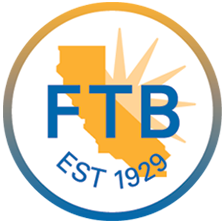
As a nonprofit, you can’t afford to neglect deferred, legacy or planned gifts. Generally, these gifts are made through living trusts and wills and are much larger than not-for-profit donations.
Your employees don’t need to be directly involved when asking charitable donors to include you in their estate plans. But your development staff should know how the process works and how to encourage such contributions.
How The Process Works
In addition to will and trust gifts, planned donations can be made with beneficiary designations on retirement accounts. For example, life insurance policies, IRAs, and 401(k) plans. But charitable annuities and other more complex estate planning instruments may come into play. These would include charitable remainder trusts and the like.
Charitable donors who are including your organization in their estate plans need to create a legally binding document. Generally, this would be a will that indicates your organization’s full name and address.
The legal document also must describe the donation and state any restrictions on its use by your nonprofit.
Asking Charitable Donors To Include Your Organization In Their Estate Plans
You need to be proactive in pursuing planned gifts, rather than reactive and just accepting windfalls that come your way. For example, feature planned giving information prominently on your website. Other media include in newsletters, brochures and your organization’s promotional materials.
Don’t assume that only more mature, long-time donors might be interested. Many people may not even consider making a planned gift unless you educate them about the option.
Even wealthy individuals don’t always consider making proper estate plans. If they promise to leave something to your organization, make sure you have it in writing. Otherwise, state intestacy laws can lead to unintended results. Use sensitive and subtle messages to get your point across.
You could also emphasize the tax benefits of acting quickly. Currently, the generous estate tax exemption $13,61 million is enacted. But it’s scheduled to refer to an inflation adjusted $5 million in 2026.
Some estates are not subject to estate taxes right now, but could be after 2025. For this reason, you may want to incorporate a planned gift into your estate plans before then.
Another point to make when asking charitable donors about their estate plans is to explain how you can use their gifts. Many donors assume that planned gifts go toward special programs and projects rather than daily expenses. So, it’s important that you provide ideas for potential special uses. But you also want to make the case for contributing to your general operating fund.
Start Building Relationships
If your organization is financially insecure or young, donors are less likely to leave gifts. However, it’s never too soon to start building relationships with financial and legal advisors. These community leaders might help individuals prepare estate plans.
On the other hand, if your organization is well-established with strong reputation, you have an edge.
You may also enjoy reading: Tax Filing Status: Filing Jointly or Separately As A Married Couple





